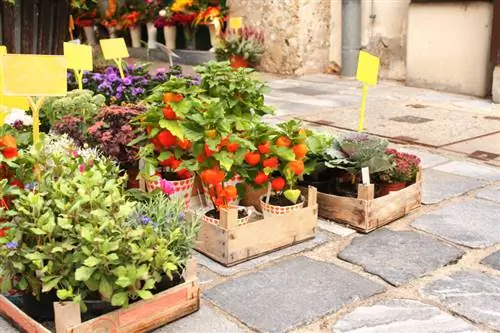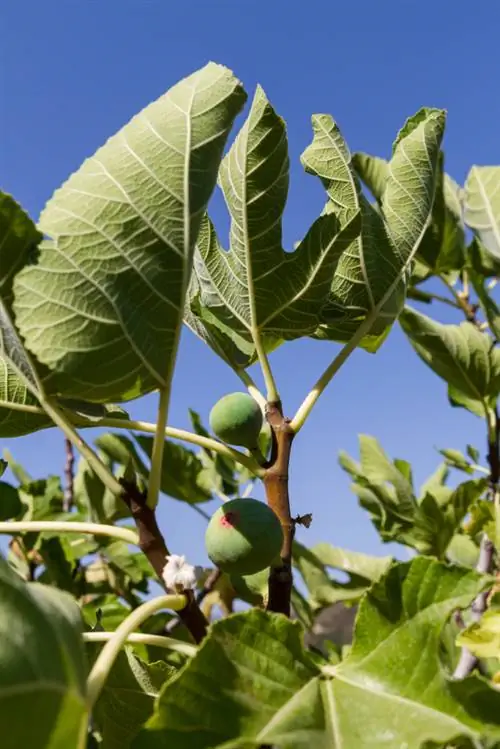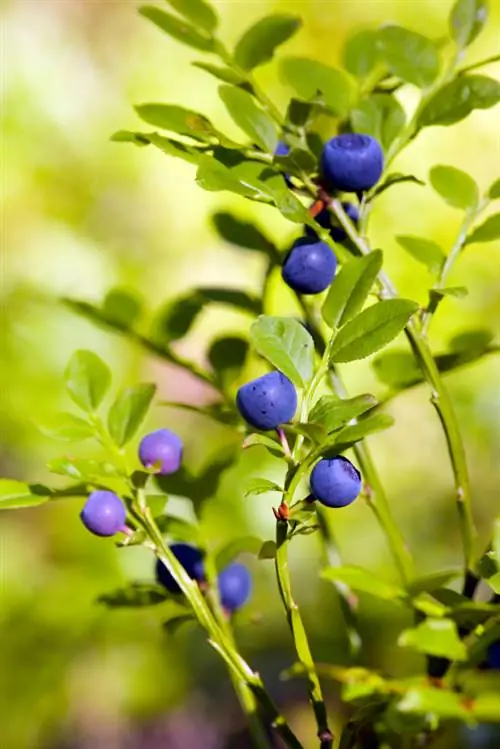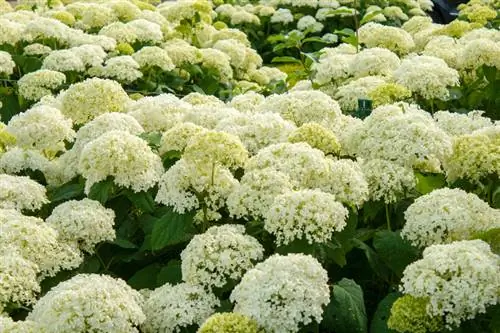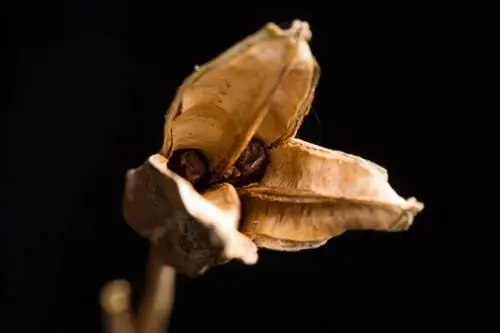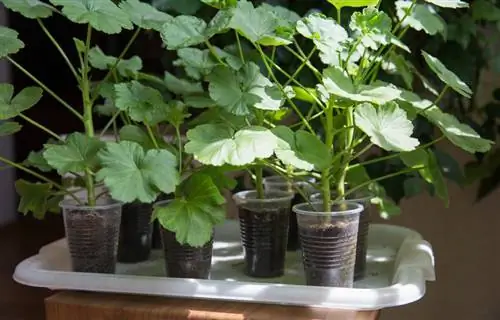- Author admin [email protected].
- Public 2023-12-16 16:46.
- Last modified 2025-01-23 11:20.
Physalis, the orange-red, cherry-sized fruits of the Andean berry, are enjoying growing popularity among many hobby gardeners thanks to their easy cultivation. The annual shrubs, which are approximately one meter high in our latitudes due to the frost, are usually grown from seeds. What is little known, however, is that the Andean berry can also be propagated from cuttings.
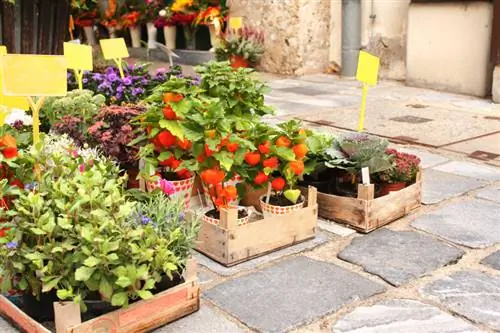
How do I propagate Physalis from cuttings?
Physalis cuttings can be obtained by cutting a 10 cm long shoot from an old bush in autumn. Then cut the offshoot diagonally and place a third of it in potting soil. Place the pot in a bright place and water regularly. After the Ice Saints, the plant can be planted outdoors.
Benefits of propagating cuttings
Propagation from cuttings has some major advantages compared to growing from seeds. In this country, the heat-loving physalis have to be brought forward from February onwards, or in March at the latest, so that the hard-working gardener can enjoy the short harvest season in September. The German summer is simply too short for the exotic plant to produce fruit in a timely manner and allow them to ripen. By propagating with cuttings, you save yourself an important step (that of growing from seeds) and can therefore harvest more quickly.
Getting and potting Physalis cuttings
To obtain cuttings, proceed as follows:
- Select suitable shoots from an old bush in autumn.
- These should grow from a leaf axil and be about 10 centimeters long.
- Cut off the shoot(s), the cut surface should be kept slightly slanted for better water absorption
- Put about a third of the cutting into a pot with potting soil.
- Commercial potting soil (€10.00 on Amazon) is also suitable.
- The pot should be placed in a bright place and watered regularly.
- The following year you can plant the physalis plant after the ice saints.
Overwintering Physalis cuttings
It is often stated that physalis (in this case Andean berries) are annual plants. This information, although not entirely false, is not correct. In their homeland, Physalis are perennial shrubs up to two meters high. We only keep them as annuals because they are not hardy and therefore freeze to death outdoors. However, you can keep the robust plants in a sufficiently large container and overwinter them brightly and frost-free. However, the wintering location should not be too warm; around 10 to 12 °C is optimal. Physalis that have overwintered too dark will rot, i.e. H. they develop so-called light drives. However, these are not fruit-bearing, which is why you should take suitable cuttings from these plants again in spring and plant them.
Tips & Tricks
Andean berries that are harvested green do not ripen. However, you can simply leave unripe fruits on the bush and put them in the winter quarters. They will still ripen even in winter at lower temperatures.

